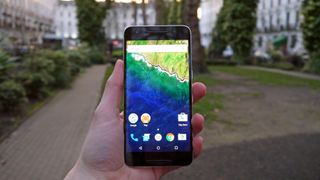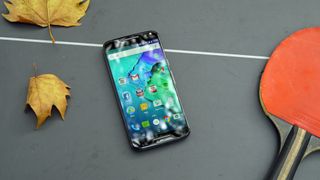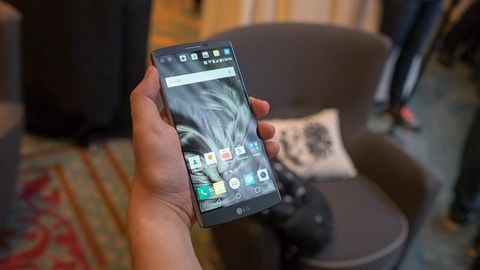Why you can trust TechRadar
The LG V10 is in a class of its own considering many of the features, like the second screen and two front-facing cameras, but there are several phablet challengers.
Some of the best phones from Samsung, Huawei, Apple and Motorola offer their own unique set of features or come in at cheaper prices. They don't stand out as much as the LG V10, but if you don't need the extra camera and screen, they're tempting alternatives.

Samsung Galaxy Note 5
The Samsung Galaxy Note 5 is the best friend to productivity-focused phone users and one of the best handsets to hold in your hand... if you can clutch its 5.7-inch display properly. It's not as wide as the LG V10, but it's glass back makes it slippery and harder to hold.
Tightening your grip on this one pays off if you can take advantage of the S Pen stylus or have taken liking to the much-improved Samsung TouchWiz-tweaked Android interface. It's display is the best ever created on a phone and it has an excellent 16MP rear camera.
Just don't look for that microSD card slot or removable battery. It's not here. Also, don't look for it in the UK. It's only available in the US and Canada in the western hemisphere and it's almost as expensive as the LG V10.

Nexus 6P
Google's Nexus 6P, announced at the same time as the LG V10, has special appeal because its specs almost match for a significantly cheaper price. It has the latest version of Android (and will always get updates first), a better fingerprint sensor on back and front stereo speakers.
The rear 12.3MP camera is a step in the right direction for a Nexus phone, but it's not as good as the LG V10, and there's a normal (not wide) selfie camera on front. You also have to deal with USB-C, which is the future, but a bit complicated for early adopters who likely have so many micro USB-charged gadgets. You're going to be carrying around both cables for a while.

iPhone 6S Plus
Apple gives you a different flavor of a phablet with its 5.5-inch iPhone 6S Plus, and the interface is tightly integrated and controlled (for better and worse). It's also an adjustment if you're used to using Android services and apps all of the time.
It has a better fingerprint sensor care of Touch ID and a very similar IPS LCD display, but the camera and camera app don't live up to what LG and Samsung have done in 2015. The aluminum design is more refined and less monstrous compared to the LG V10, but the most slippery of all the best phones out there.

Moto X Pure (Style)
Known as the Moto X Pure Edition in the US and Moto X Style worldwide, this really should be called Moto X 2015. Any way you phrase it, though, it's a brilliant update to the Moto X 2014. Color and style customizations via Moto Maker let you add personal touches to its curved back, and Motorola always updates to Android quicker than the rest of the competition.
The specs are extremely close to what you get with the LG V10. The chipset is the same, only being two steps behind with 3GB of RAM and no fingerprint scanner. All of this saves you money in the long run, though, as this new Moto X can be had at a much cheaper price.

LG G4
The LG V10 proves that the South Korean company can make a great phablet at 5.7 inches, but it can do the same at a more reasonable 5.5 inches, too. It has a good rear-facing camera, color rich display and fully capable specs. The 3GB of RAM and entry-level 32GB of storage are the major internal differences between it and the LG 10.
The lack of a second screen or dual front-facing camera means you won't be taking part in LG's grand experiment, but you also save a bunch of cash on this cheaper handset. Just know, there's no escaping the same LG interface and apps that I've complained about on the LG V10.


